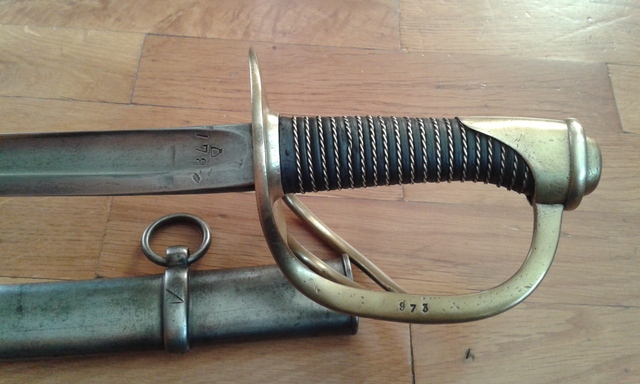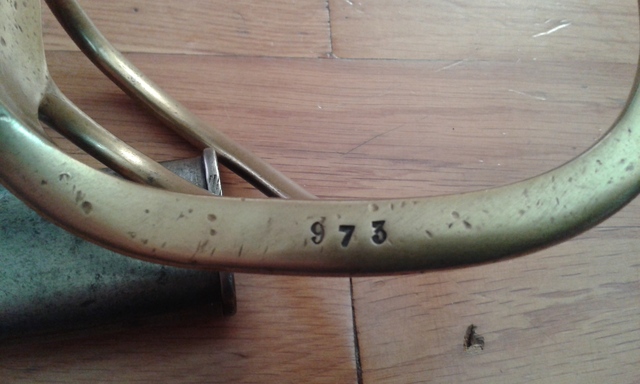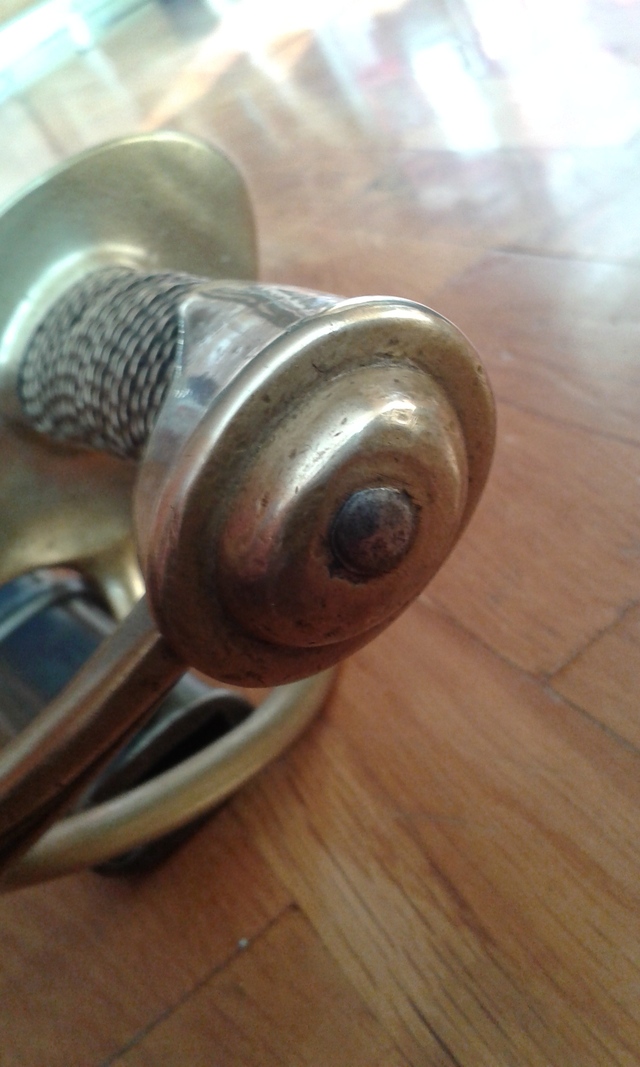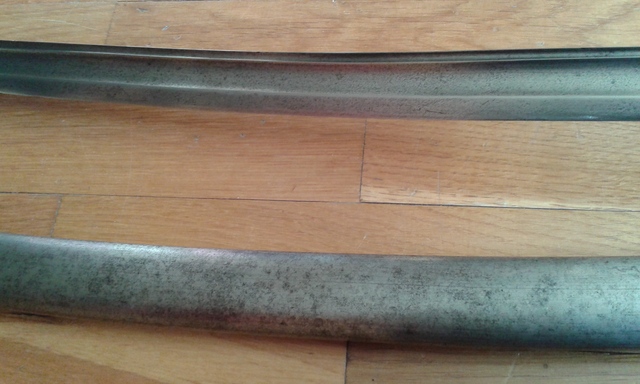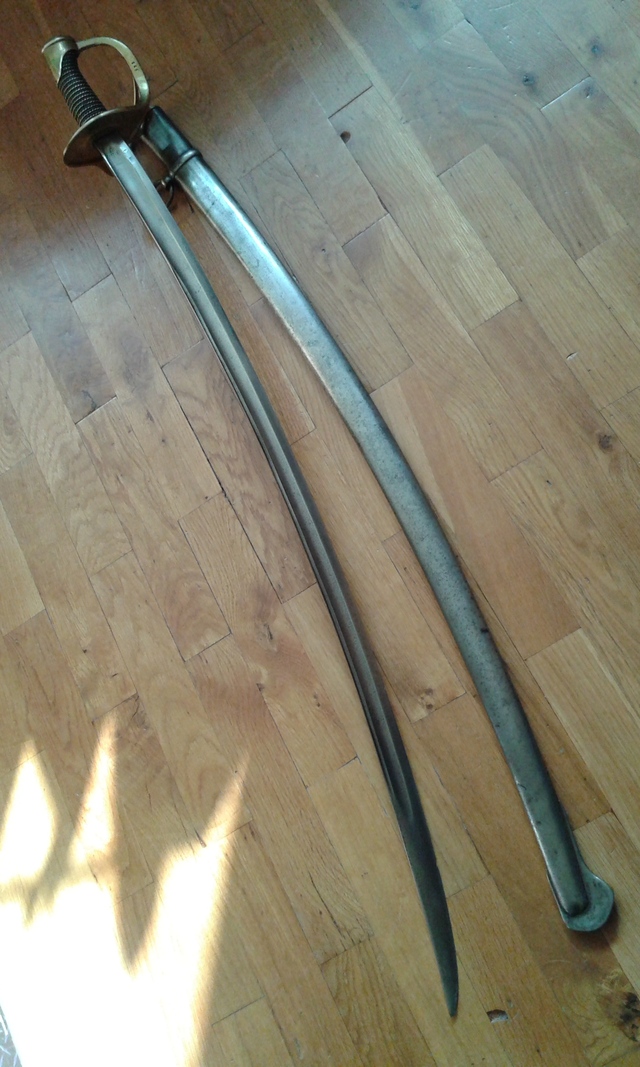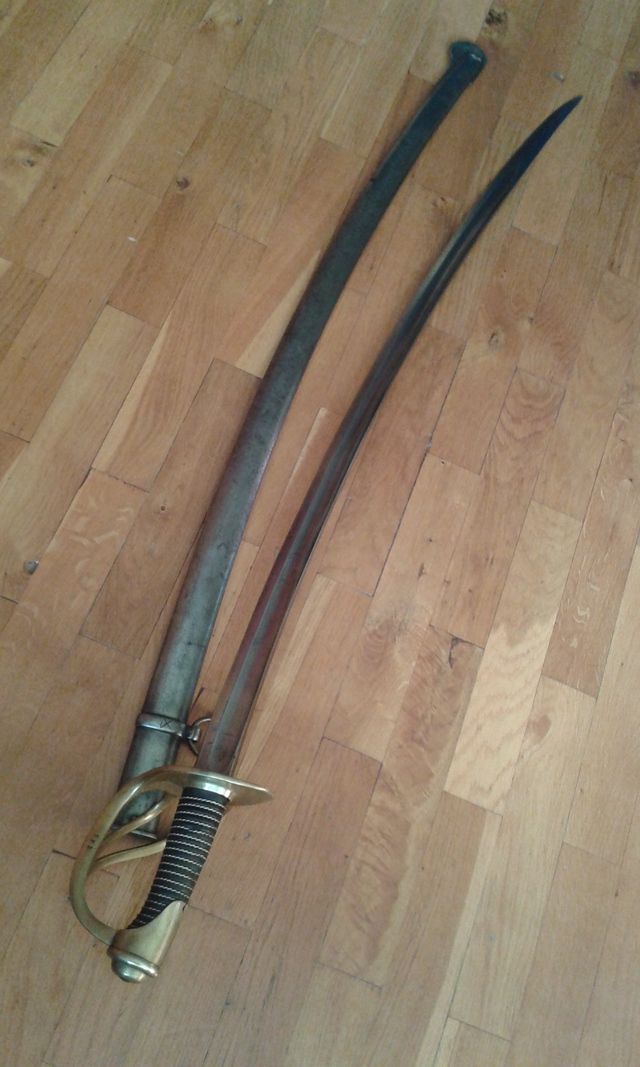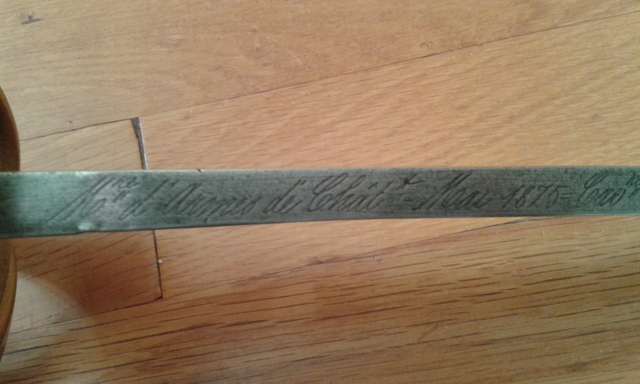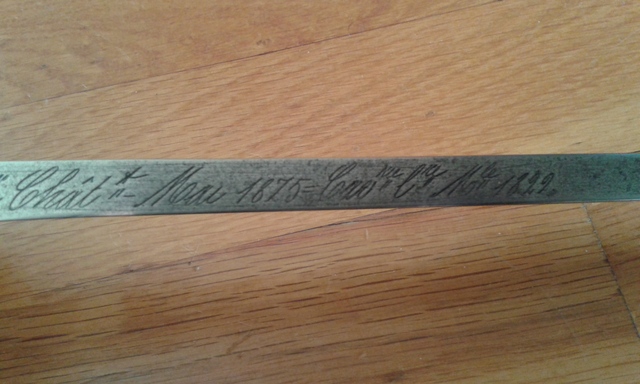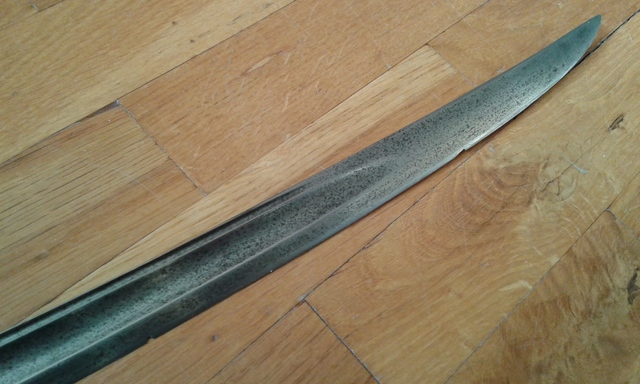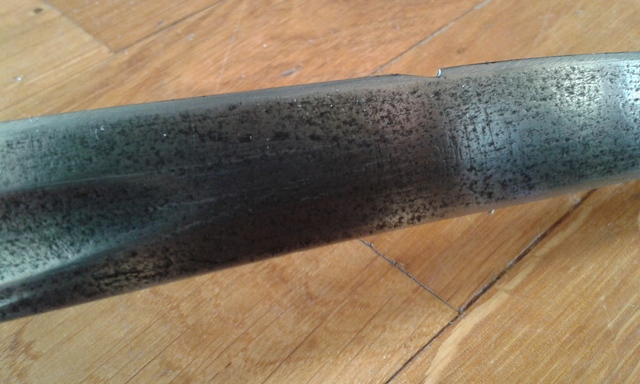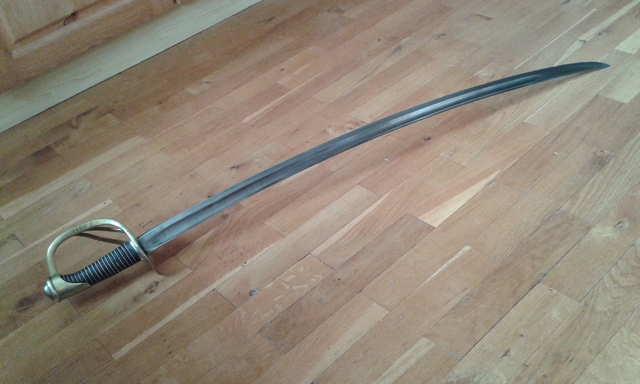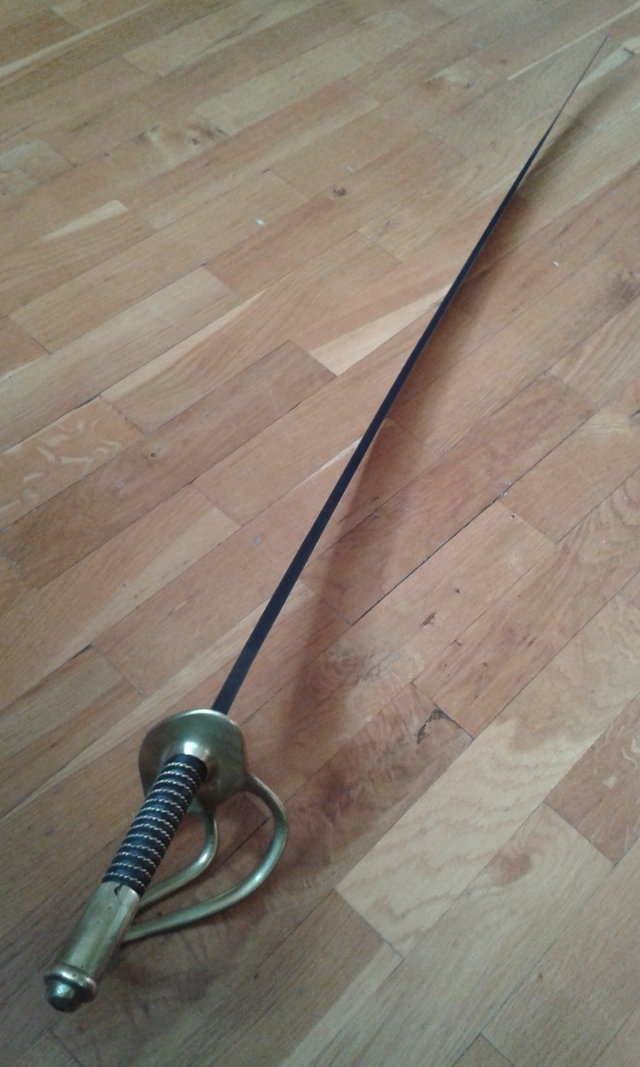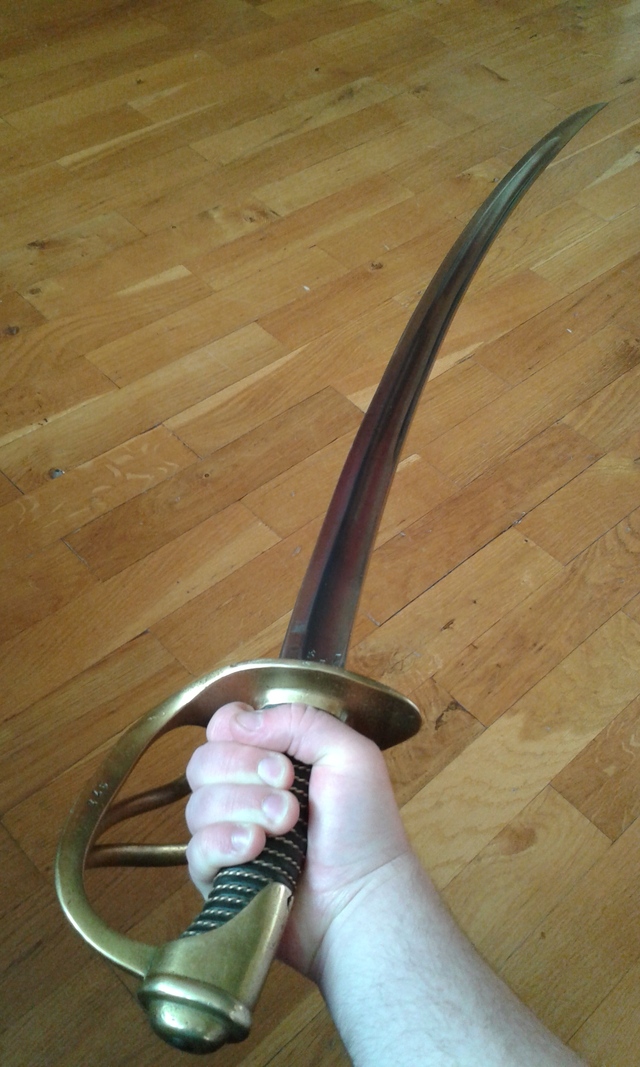Mine was made in Chatellerault in 1875. If the blade was rehilted with a hilt of some other date, I wouldn't know. If it was, it was done well and during its service life. All markings visible below int he pictures.
The dimensions of mine are:
Weight without scabbard: 955gr
Weight of scabbard: 750gr
This should be 1705gr sword + scabbard, but when I weigh them together, the scale says 1820gr. Weird.
Length overall: 105cm
Blade length: 91cm
Scabbard length: 95cm
Blade width: 31mm
Thickness oft he blade: 11m at the base, 6.5mm at the middle of the blade, 3mm at the end oft he fuller, 2mm 5cm from the tip. Very dramatic distal taper as you can see.
The hilt and grip are slightly loose, probably due to both shrinkage and lack of buffalo leather between the hilt and the blade. The leather oft he grip is obviously old but not damaged and the twisted wire is only slightly loose in a few places. The blade looks like it has been sharpened for service, seen some use and dulled a bit. There are few nicks and chips on the edge in the upper half of the blade and at the back of the blade nearer to the hilt. The blade has a very nice grey patina and no active rust or deeper pitting. Scabbard is in the same condition but slightly darker. Brass of the hilt is also very nicely preserved, but has some dents and a little crack at the edge of the butt cap.
Handling of this saber is very nice. PoB is at about 16cm from the hilt, so a bit more than 6“. This PoB with low overall weight of the saber, dramatic distal taper and long blade gives this saber a nice combination of agility and cutting and striking power. The whole blade is very stiff except the tip part from the end of the fuller to the tip because the blade gets very thin there.
I must confess that I don't find the twisted brass wire on the grip very comfortable and if I would change anything on this saber, I would add a backstrap to the grip and put a non twisted wire on the grip. I find that combination much more comfortable.
The hilt is beautiful and elegant, and not too massive while still offering quite a bit of protection to the outer, exposed part of the hand. The peen is round and well done.
Overall, I love this saber and I think it's a very good, effective and universal design. No wonder it was in use for over 100 years. Heavy cavalry might want a more durable and reinforced tip, but for light cavalry, this design was obviously effective and durable enough.
Enjoy the pictures.

